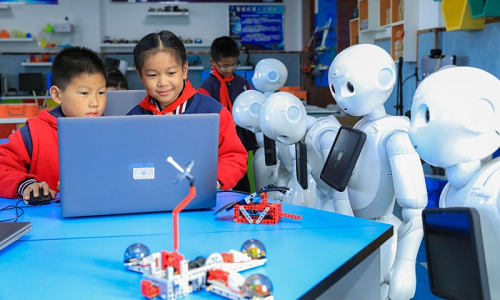In a landmark move to prepare its youth for a technology-driven future, China has announced that artificial intelligence (AI) education will become a mandatory part of the national curriculum for primary and secondary schools starting in the autumn semester of 2025.
The initiative, unveiled by China’s Ministry of Education, underscores Beijing’s long-term vision to establish itself as a global leader in AI and digital innovation. Schools will have the flexibility to integrate AI lessons within existing subjects or introduce standalone courses focused on artificial intelligence.
Under the new framework, primary students will participate in hands-on projects that introduce basic AI concepts, while middle school students will explore real-world applications such as robotics and smart systems. High school curricula will emphasise advanced innovation, including problem-solving and design using AI technologies.
Education Minister Huai Jinpeng described AI as “a transformative revolution that redefines learning, innovation, and opportunity.” A detailed white paper on AI education is expected in 2025, outlining strategies for nationwide implementation.
China’s decision mirrors a growing global trend of incorporating AI literacy into education, with countries like Italy and regions such as California adopting similar initiatives. However, China’s scale and centralised approach make this policy one of the most ambitious worldwide.
Experts believe early exposure to AI will equip Chinese students with critical digital literacy, creativity, and problem-solving skills — essential for thriving in an increasingly automated world. Beyond education, the move also aligns with China’s broader geopolitical and economic goals, ensuring its future workforce remains competitive in AI, robotics, and automation.
By nurturing AI proficiency from childhood, China is not only modernising its education system but also strategically investing in human capital to secure long-term technological dominance. As the global community watches closely, this initiative could reshape how nations worldwide integrate emerging technologies into their classrooms — and their futures.







